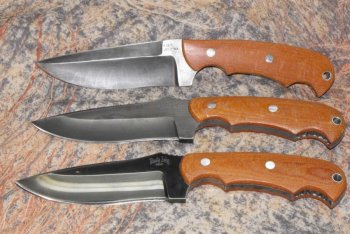theWeatherman
Well-Known Member
So I had this idea to take the wheels on my 2x42 craftsman and switch them out to rubber covered contact wheels, I haven't measured them but I am sure they are 2" and then 4". I then thought that I could then use those wheels to grind on. Now I started doing searches on grinding wheels and hollow grinds and find that most people use 8-12" wheels to do their grinds. I even find a grind height calculator for the wheels and thickness of the stock used.
I was hoping you guys could tell me about grinding on the different diameter wheels and why you need a grind height calculator? Why cant' you just use the wheel like a platen and walk the grind up the blade towards the spine (which is what I do for flat grinds)?
Thanks!
Brian
I was hoping you guys could tell me about grinding on the different diameter wheels and why you need a grind height calculator? Why cant' you just use the wheel like a platen and walk the grind up the blade towards the spine (which is what I do for flat grinds)?
Thanks!
Brian


